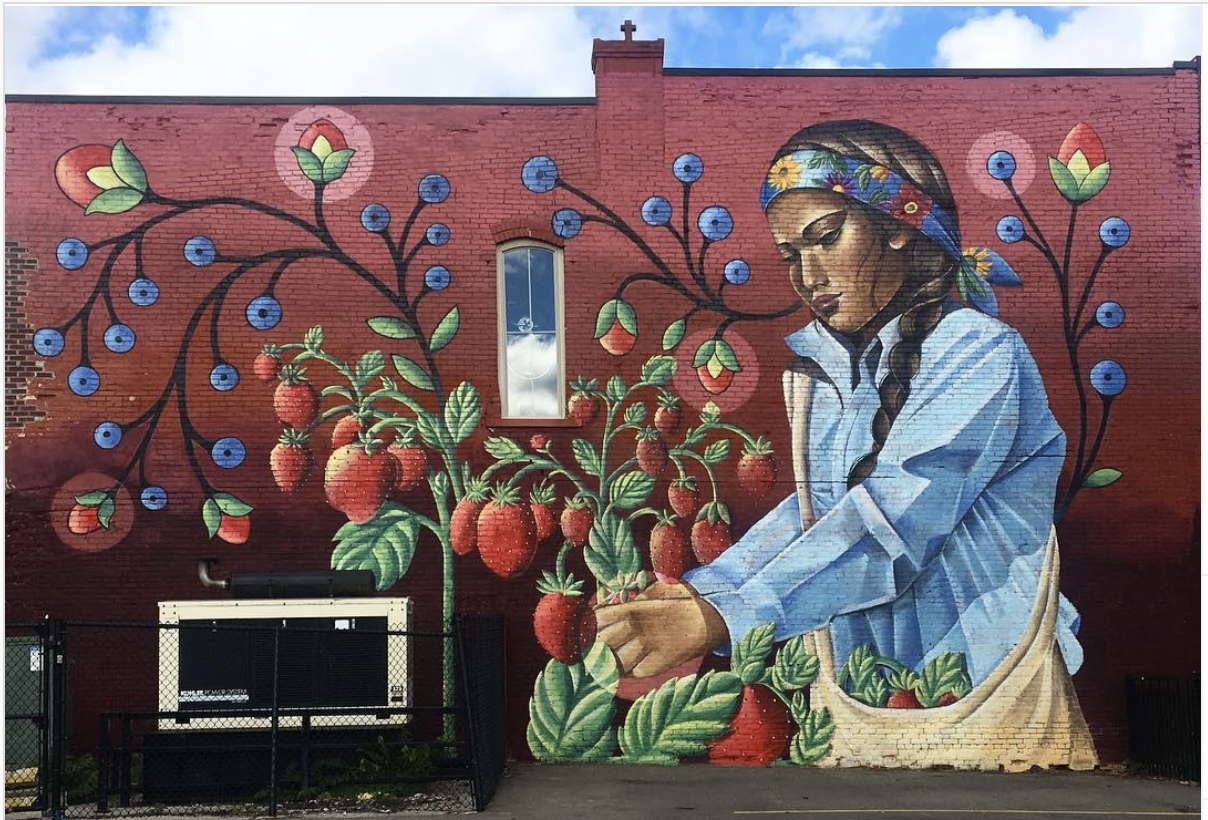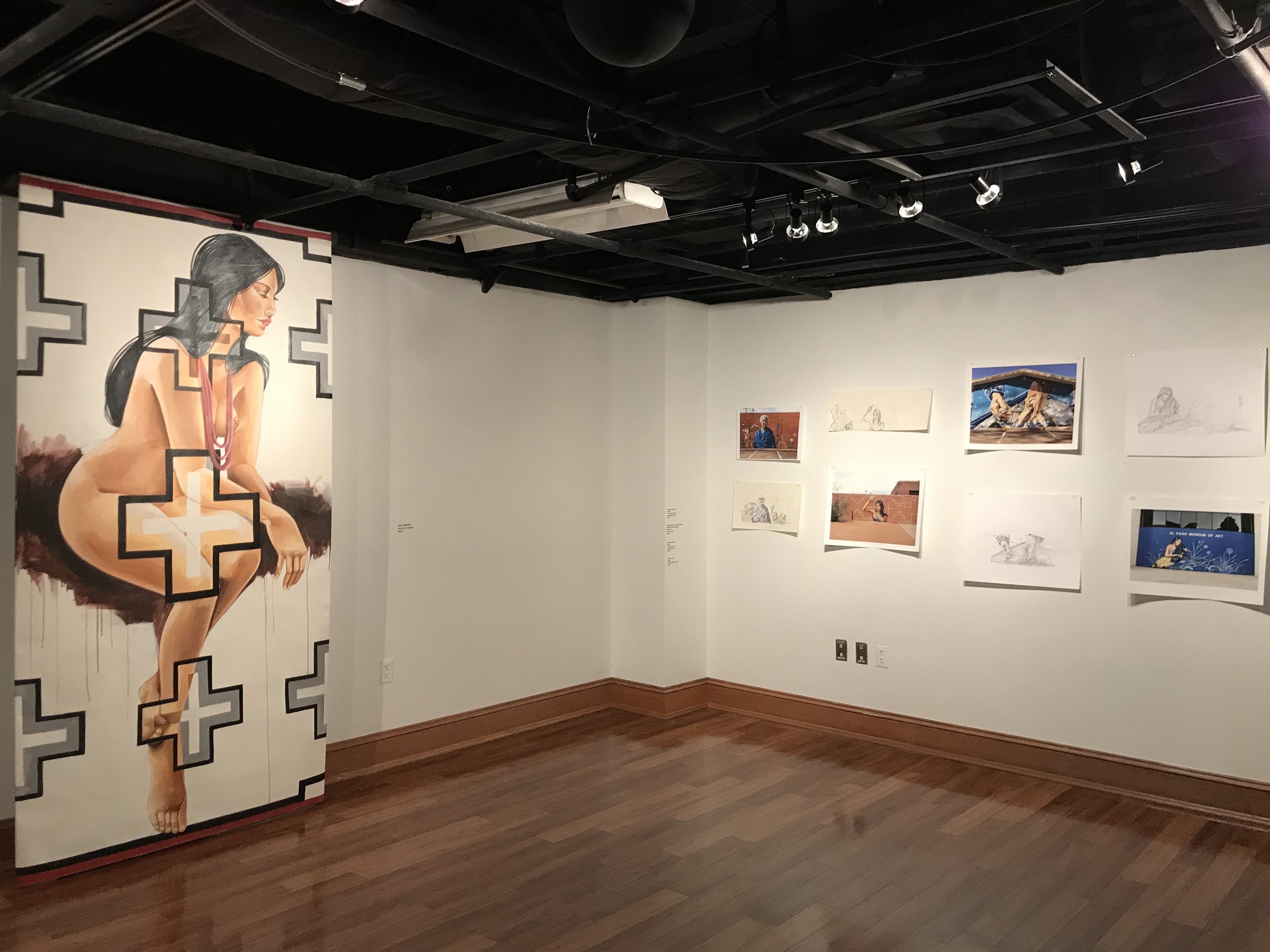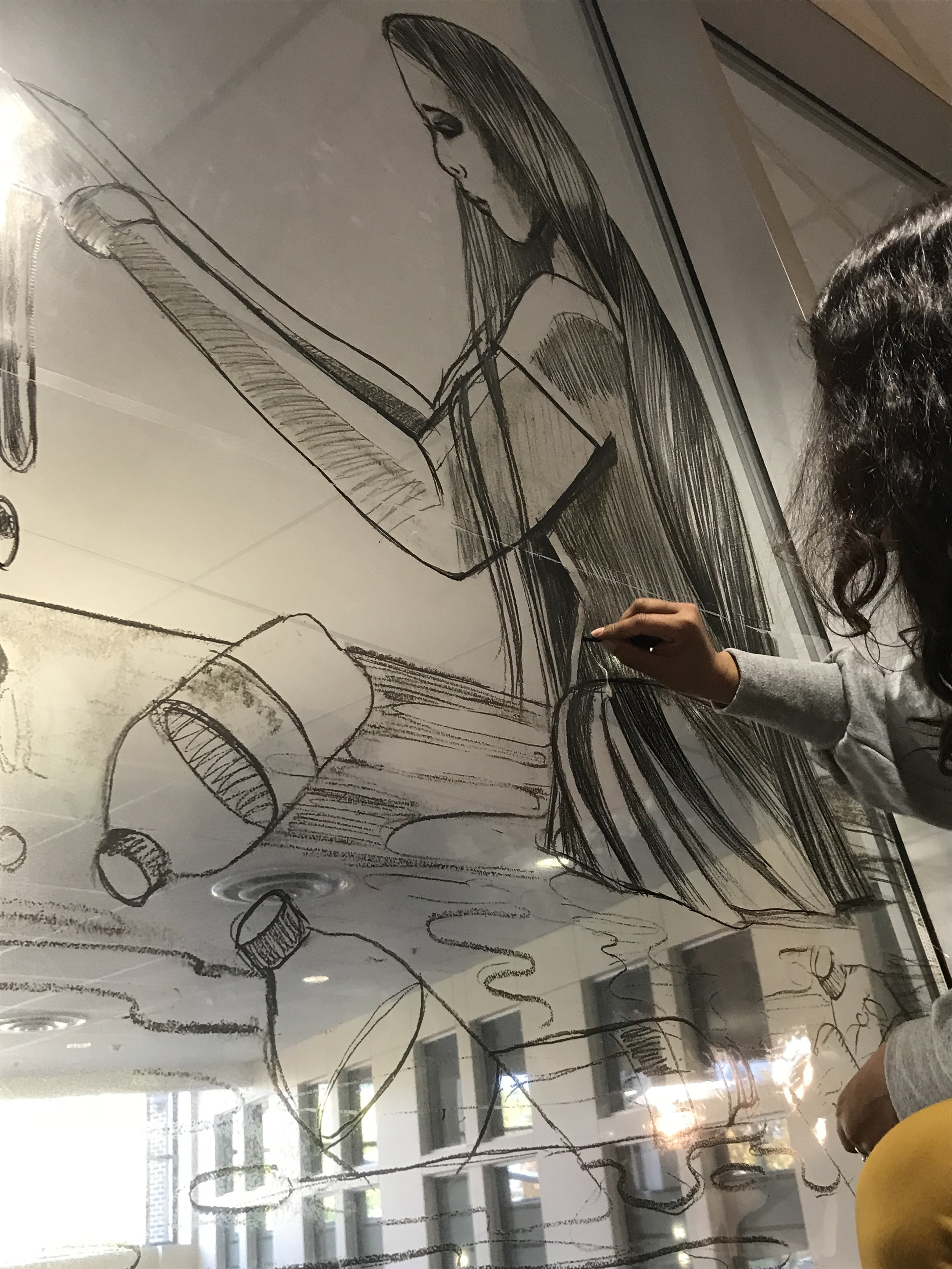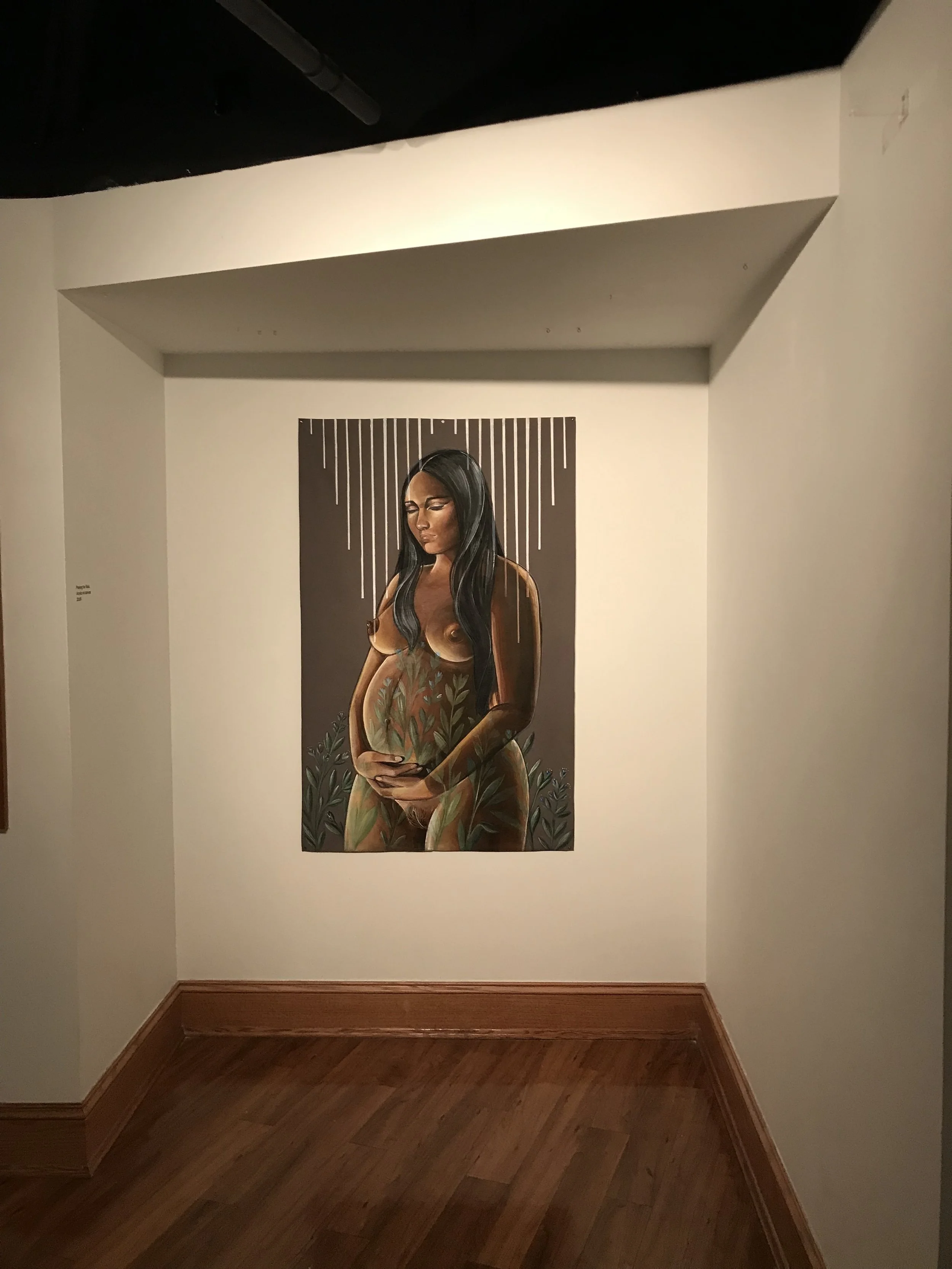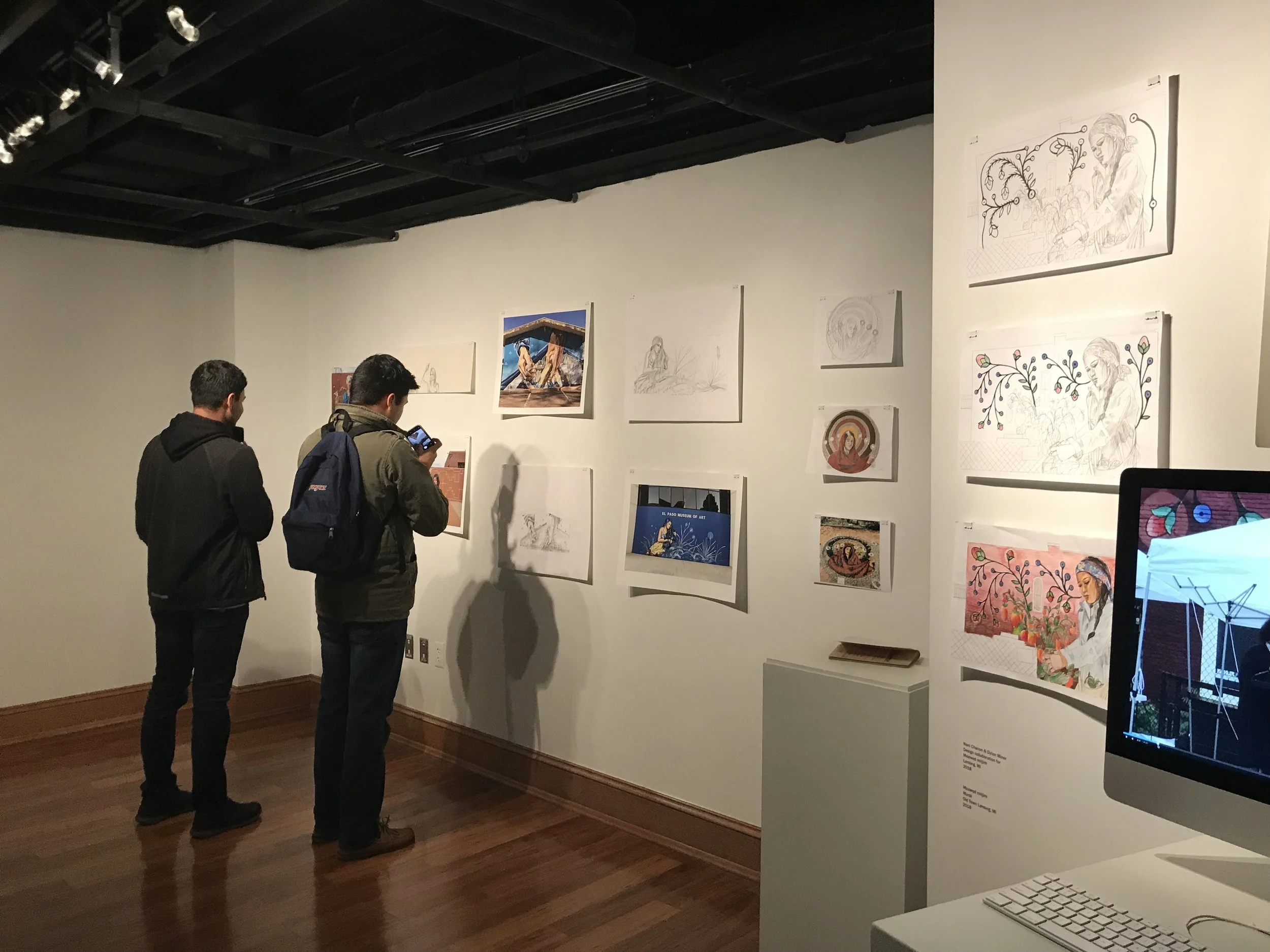Nanibah Chacon: Ni’ hoosdzáán
Ni’ hoosdzáán / The Female Ground
October 29, 2018 - November 21, 2018, RCAH LookOut Art Gallery, MSU
Cocurated with Dr. Estrella Torrez. Installation by Steve Baibak.
Chacon’s residency at MSU was made possible by the leadership of Dr. Estrella Torrez and Dr. Yomaira Figueroa and sponsored by the MSU Womxn of Color Initiatives (WOCI).
In Diné bizaad, the Navajo language, the term ni´ hoosdzáán refers to the Land being ready to provide life. For her exhibition in LookOut! Gallery, artist Nanibah Chacon exhibits a suite of paintings that treat the feminine body as both – playing on terms from Western art history – a figure and a ground, as an object of reverence and as the basis for new life. Ni´ hoosdzáán is Chacon’s first university exhibition in the Great Lakes region. The exhibition includes eight paintings, as well as preparatory drawings for murals, including the one she created while in residence with MSU’s Womxn of Color Initiative. The exhibition also includes a new work that Chacon designed for the LookOut! Gallery windows and a limited-edition risograph publication that was collectively created as part of a drawing workshop Chacon facilitated in the Residential College in the Arts and Humanities.
Chacon began a prolific career as a graffiti writer and continued this practice for the next ten years. After 2012, this work took new form as she began creating murals and large-scale public works that engage community and the local landscape. Working on walls and in a public setting was a natural progression that reflected Chacon’s philosophy that art should be accessible and a meaningful catalyst for social change. Her work, which captures Indigenous traditions and philosophy, provokes thought and discourse surrounding Indigenous culture and feminism. Community-based arts and educational integration are also a key component the work Chacon creates.
Maawed miijim: One Who Provides is a new public artwork completed by Nanibah Chacon during her residency at MSU. In this large-scale mural located in Lansing’s Old Town neighborhood, Chacon depicts a young, Indigenous woman harvesting strawberries. Developed in conversation with Latinx and Anishinaabeg community-members in Lansing, the mural explores the shared reverence for and significance of the strawberry for Anishinaabeg and Mexican-American people. Strawberries, known as odeminaan or heartberries, performed an irreducible role for young Anishinaabe-kwewag or Indigenous womxn. For many Latinxs, who arrived in Michigan as agricultural laborers, strawberries also played an important role in their community histories. By drawing together layered histories and communities into a single image, Maawed miijim affirms Indigenous and Latinx womxn’s connections through tradition, ceremony, and labor with the natural world while also acknowledging the vulnerability of that connection to Land through capitalist exploitation.
